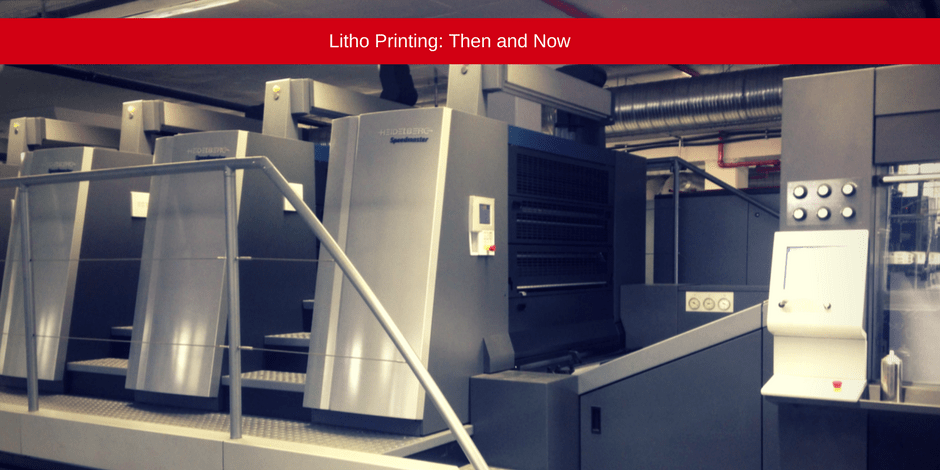A Comprehensive Overview to Recognizing Litho Printing Strategies
The world of litho printing, a strategy stemming from the late 18th century, is an interesting blend of history, development, art and scientific research. This detailed guide will certainly unravel the complexities of this printing technique, from the structure of litho inks to the obstacles encountered in modern applications. As we venture into the complexities of lithography, the relevance of automation and sustainability in guaranteeing its future importance becomes progressively clear. Keep with us as we journey right into the captivating realm of litho printing.
The Historic Evolution of Litho Printing
The historical trajectory of litho printing, a crucial innovation in the realm of communication, is an exciting tale of human ingenuity. Birthed in the late 18th century by Alois Senefelder, this method was at first an affordable method of publishing staged works. Lithography, obtained from the Greek words for 'stone' and 'to write', utilized a smooth stone surface to move pictures onto paper. The procedure advanced with the advent of the rotating press, which significantly raised efficiency (litho printing). In the 20th century, the innovation of offset lithography revolutionized the industry, permitting for mass production of top quality prints. Each stage of litho printing's development showcases mankind's unrelenting search of performance and top quality in aesthetic communication.
Deciphering the Science Behind Litho Printing Inks
Moving on in the expedition of litho printing strategies, the emphasis now shifts to the science behind litho printing inks. The composition of these inks, their drying procedure, and shade mixing techniques develop the foundation of this complex art kind. Understanding these components is vital to understanding the craft and achieving the preferred print outcomes.
Composition of Litho Inks
In lithographic printing, the basic role of litho inks can not be overstated. The make-up of litho inks differs depending on its objective, however generally, they are composed of 2 primary components - pigments and cars. Pigments, the color-providing elements, are finely ground particles suspended in the vehicle, a fluid that brings the pigment onto the printing surface. The automobile is a complex mixture of oils, resins, and solvents, which affect the ink's drying out time, bond, and gloss. In addition, numerous additives exist to enhance particular residential properties like circulation, drying, and resistance to environmental impacts. Each component plays a crucial component in the last print's high quality, making the exact solution of litho inks an intricate scientific research.
Ink Drying Refine
From the make-up of litho inks, focus turns to the fascinating process of ink drying. 2 primary techniques are used in litho printing: oxidative drying out and absorption. Absorption, on the various other hand, entails the ink permeating right into the paper fibers, which is a quicker procedure yet can lead to much less lively colors.
Shade Combining Techniques
While the drying procedure plays a vital function in litho printing, the science of shade blending techniques holds equivalent value. The science behind litho printing inks likewise takes right into account the openness of the ink, which affects exactly how colors overlay and mix.
The Art and Design Aspects in Litho Printing
Litho printing breathes life right into art and layout with its unique aspects. The procedure entails developing a picture on a lithographic limestone plate or steel plate with a smooth surface. The picture is after that printed onto a tool, generally paper, by transferring the ink from home plate. What sets litho publishing apart is its capability to duplicate intricate designs with high integrity, making the output practically similar to the initial art work. This is achieved via the usage of various line techniques such as cross-hatching, hatching, and helpful hints stippling, which allow for an array of tonal impacts. Additionally, litho printing fits a selection of shades, enabling artists to create dynamic and dynamic prints. This mix of accuracy and adaptability makes litho printing a recommended selection for lots of artists and designers.
Modern Applications of Litho Printing Methods
Litho printing methods have discovered substantial use in the modern industrial sector. Its impact and significance remain to expand with the advent of brand-new developments and technologies in the field. This area will explore these contemporary applications and the transformative duty they play in the printing industry.
Business Litho Printing Uses
Litho printing stays a vital component of the industrial sector. High-volume printing jobs, such as the manufacturing of publications, newspapers, and packaging, rely on litho printing for its capability to provide remarkable picture high quality and price effectiveness. Litho printing also provides a wide shade spectrum, exceptional to that of electronic printing.
Advancements in Litho Printing
Pressing the borders of traditional strategies, contemporary advancements have actually sustained a host of innovations in litho printing. One popular development is digital litho printing, which incorporates the merits of electronic modern technology with litho's high-grade output. These developments highlight the long-lasting significance of litho printing in the contemporary world.
Checking out the Refine of Litho Printing: Detailed

Obstacles and Solutions in Contemporary Litho Printing

In spite of the precision and practice that litho printing happily supports, it is not without its collection of modern difficulties. The most prevalent issues consist of the high initial arrangement price, problem in printing variable data, and environmental problems due to chemical usage. Nonetheless, solutions are emerging as technology evolves. Digital litho printing enables economical brief runs and simple customization, dealing with the problem of variable data. Environmentally-friendly inks and much safer plate-making processes alleviate environmental concerns. Additionally, advancements in automation have actually reduced labor prices, further equalizing the lithography process. Therefore, while there are obstacles, the litho printing industry is proactively adjusting to satisfy them head-on, ensuring its significance in the future.
Final thought
In conclusion, litho printing, with its rich history and clinical ins and outs, holds a significant place in the print sector. The future of litho printing hinges on its capacity to adjust to these changing demands, verifying its long-lasting value in an advancing market.

Comments on “litho printing Services with Speedy Turnaround Times”